Between 2014 and 2015, the North Ostrobothnia Regional Fund carried out the biggest ever regional project of the Finnish Cultural Foundation. The project budget was nearly EUR 300,000 in total, of which the Cultural Foundation contributed EUR 250,500.
In the Pohjavirta project, eight works of contemporary art were produced for the region of North Ostrobothnia. The works are a gift of the Regional Fund to the municipalities involved and will remain their property. All the works are public art, and they are placed in busy locations not normally known as sites of contemporary art. The locations include a port, alongside fields and a town square. In fact “New locations for art” was used as the project’s working title.
The project was carefully prepared, and local actors committed to it early on. All works involved local companies as partners. Local people were also engaged; the works were about them or they took part in the implementation process. An open idea competition was announced in early 2014. Artists were given a free hand, as the aim was to produce something entirely new. The entries were expected to be surprising, placed in untypical locations and combine different types of art. A total of 116 ideas were received, and they included a broad range of different entries, from visual arts to dance.
The final selections were made by a group of curators consisting of Antti Tenetz from the North Ostrobothnia Regional Fund, Janne Kauppinen from the Oulu Museum of Art and artist Petri Sirviö. Mike Watson, a curator from Britain, was also involved in the process. One of the pieces was chosen by a jury, while 12 others were selected for further processing by the artists and the curators.
The curators played an important role in the project. They discussed the criteria and realisation of the entries with the artists, encouraging them to adopt new thinking and use new materials. Even though the curator–artist partnership is now common in the Finnish arts scene, not all artists are familiar with the practice. For this reason, the aim was to introduce the artists involved to the arrangement.
The curators selected the remaining seven works of the project on the basis of the revised entries. In the end, only works that will remain on permanent display in public spaces were selected. In fact, a continuous and permanent physical presence was one of the selection criteria applied by the curators. As expected, high artistic quality and local relevance were the other criteria. The North Ostrobothnia Regional Fund needed expertise in a wide range of areas for such an extensive multi-art project. The curators and the Fund secretary were extremely busy throughout the project. The producer played an important role in issues concerning contractual practices, permit processes and funding. One of the main aims of the Fund in the project was to share the expertise that it had accumulated over the years. For this reason, an online arts acquisition package aimed at facilitating such acquisitions was produced as part of the project. This means that the project will have a lasting impact.
Text by Anni Saari, published 16.6.2016 in the blog On Arts and Sciences
